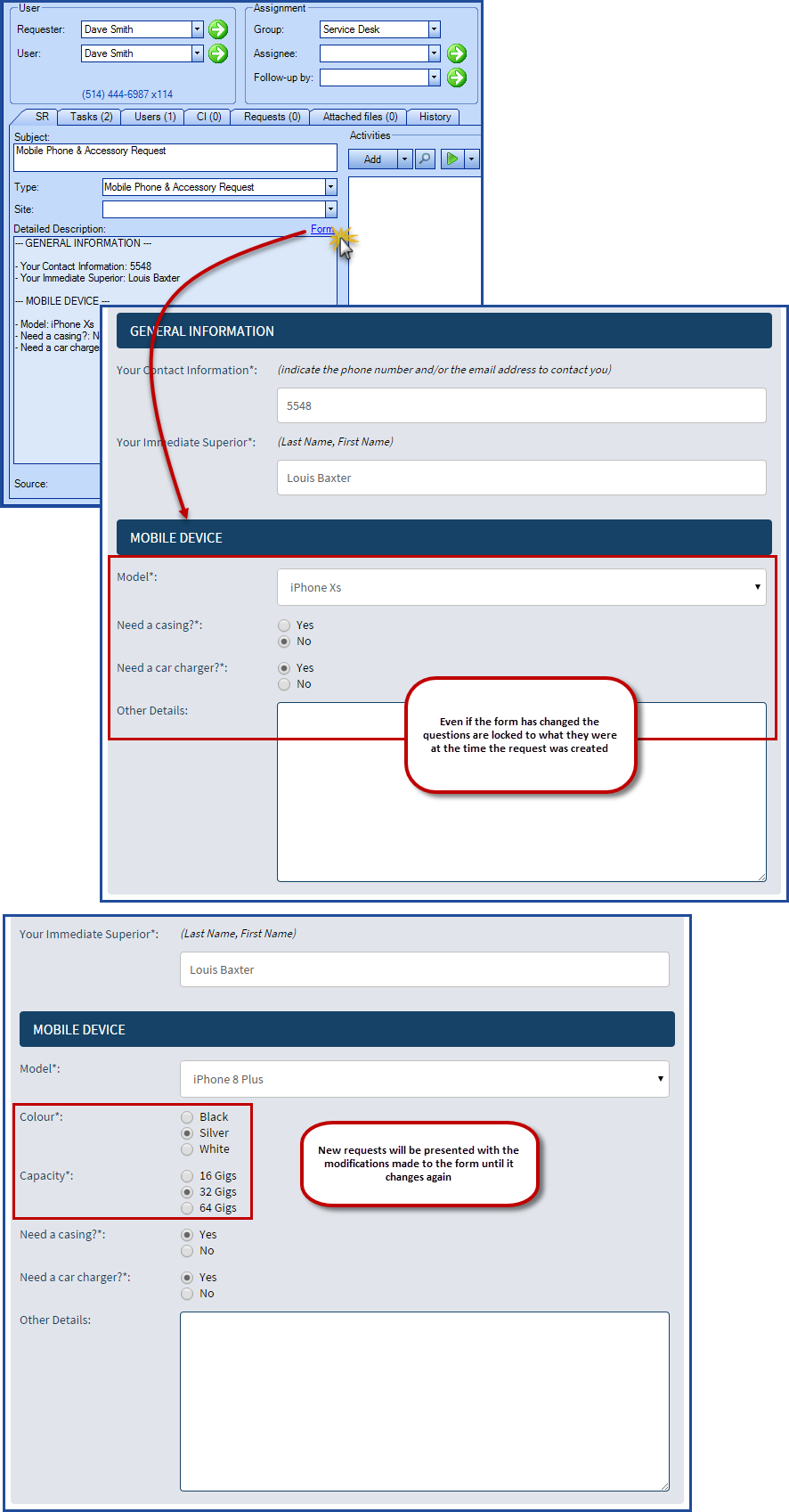Why do two requests of the same type have different forms?
In Octopus forms are an important tool for incident management and service requests delivery. But for all kinds of reasons, like process changes or continuous improvement, the forms change regularly.
Due to its constant modifications and to avoid confusion between the form offered to the user at the time a request is created and the form modified later, Octopus "locks" the form of a request to the one that was used to create the request.
So if you return in the form later to consult or modify the answers, you will see the version of the form as it was at the time of the creation of the request.
Example
We have a form to request a mobile phone.
In the phone options section, we have the following questions:
- Model
- Need a casing?
- Need a car charger?
This request is already in production and several users have used it to make a request.
At a later time, we add new choices to the same form:
- Model
- Colour
- Capacity
- Need a casing?
- Need a car charger?
Of course the next time a request of this type is created, the new version of the form will be used. But when reading or modifying the form later, the version available at the time of creation will be the one you will see in the request.

Thank you, your message has been sent.
